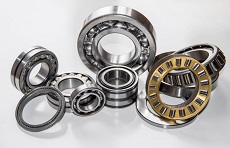
Bearings come in lots of shapes and sizes, but each has a designated use. They all work to make some kind of movement smoother or more controlled by reducing friction with a round piece of metal that is often encased in metal housing. Take a look at some of these unique kinds of bearings and their amazing uses.
- Roller Bearings
Stainless steel roller bearings may be used in a variety of applications, but they’re generally used in circumstances that require enduring heavy loads, such as industrial caster wheels or conveyer belt rollers. Because the shape of each bearing is a cylinder, the weight is spread out over a large area, ensuring great durability and a smooth roll.
- Needle Bearings
A variation on the roller bearing, needle bearings simply use very tiny roller bearings to serve their purpose. Their smaller size also increases the relative surface area that must bear the load, so they can actually withstand a substantial amount of weight. Because they are so small, needle bearings are just perfect for tight, high-load applications such as gears or hydraulic pumps.
- Ball Bearings
Ball bearings, the most common type of bearings, usually consist of a series of metal balls used to keep movement flowing in smaller applications. In some instances, ball bearings and their housing may be made of ceramic instead, which allows for high-temperature applications. Because of their shape, ball bearings generally cannot handle large amounts of weight (with some exceptions), so their uses are usually limited to places with smaller loads. This type of bearing is commonly found in skates, blenders, bikes and copy machines.
- Earthquake Bearings
Although ball bearings are usually not suited for large uses, they can sometimes be used, if they’re big enough. Hundreds of giant ball bearings make some buildings such as the San Francisco Airport able to withstand large amounts of movement back and forth, protecting the integrity of the building in the event of an earthquake by allowing it to “go with the flow”.
- Magnetic Bearings
Magnetic bearings serve a very unique purpose. They are used in some flywheel energy storage systems that run at extremely high speeds. Magnetic bearings make the flywheel float on a magnetic field and virtually eliminate friction (thus minimizing heat generated), which allows the system to run more efficiently without melting or exploding.
All kinds of bearings make dozens of different kinds of technology possible. By spreading out a load and reducing friction in countless applications, bearings all but make the world go round.
Related posts:






